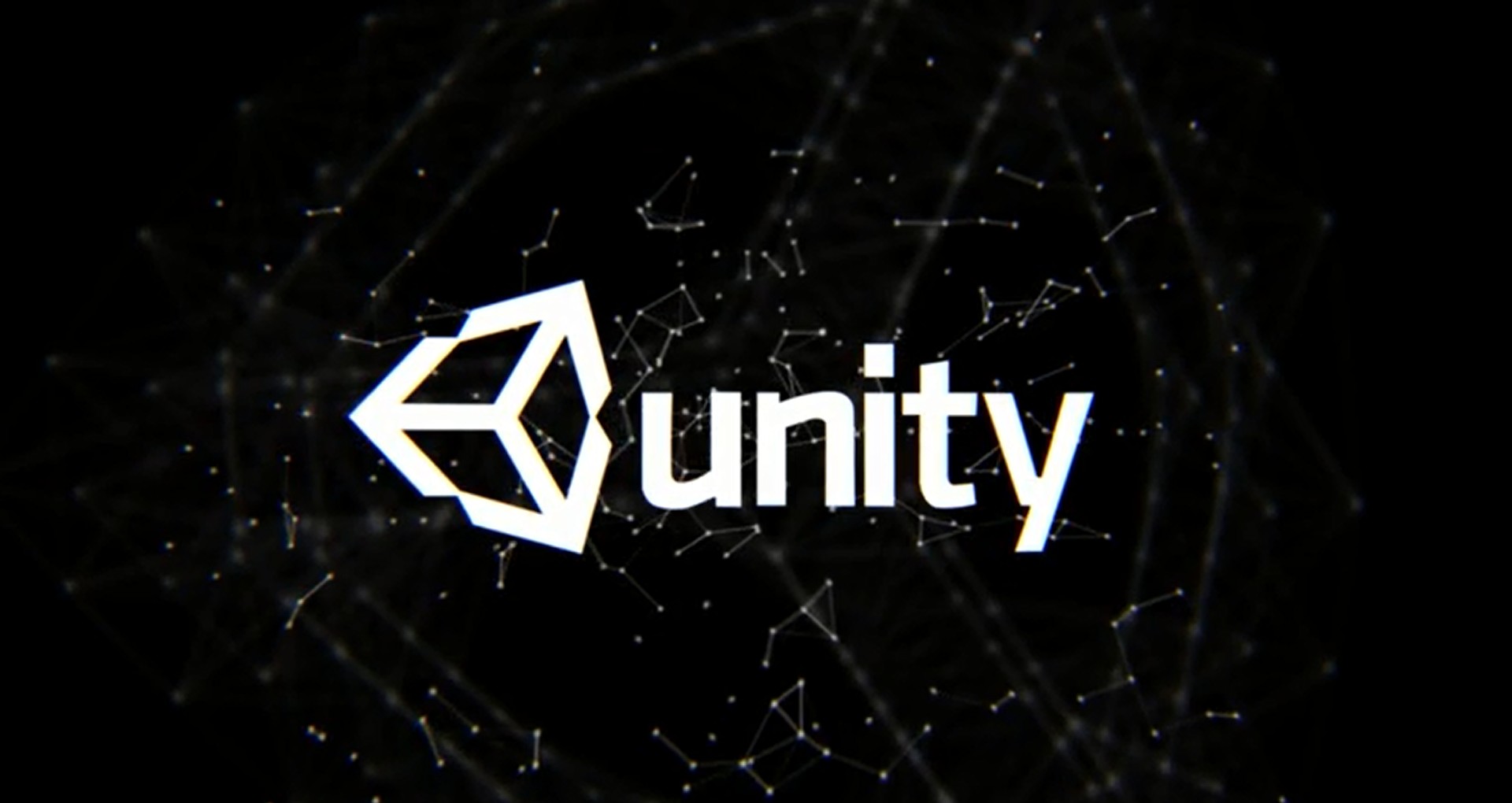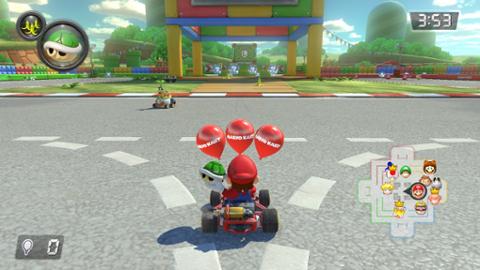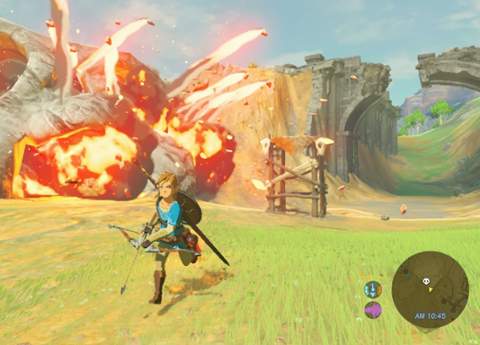[caption id="attachment_139249" align="aligncenter" width="1920"]

Nintendo Switch[/caption] Nintendo has finally announced its next-generation console, the Switch. On the heels of the success of "Super Mario Run" on iOS, Nintendo is going mobile again, this time with a morphing console that might prove enticing to developers as well as gamers. Switch is generating a lot of buzz among tech media, and pre-orders seem to be going incredibly well (Nintendo hasn’t made a formal announcement about early Switch orders, but lines at GameStop and Amazon issues suggest Nintendo has a hit). With its unique take on gaming and portability, there will be a lot of developers excited about the Switch. The Nintendo Switch is essentially a tablet that docks in a set-top cradle to become a TV console game. It has removable game controllers that can be used as companion joysticks for interactive games, much like the Wii, but also attach to the Nintendo Switch tablet itself. In crossing the lines between portable and console, the Nintendo Switch has to straddle a lot of lines. Not only do on-the-go games have to be console-quality, but the Nintendo Switch has to offer an online component in order to remain truly competitive against the PlayStation and Xbox. That’s a lot to pack in, but developers needn’t worry too much. [caption id="attachment_139250" align="aligncenter" width="1920"]

Unity 3D[/caption]
Unity Is Key
If you want to develop a Switch game, you’ll need to know Unity. Whether you want to build a 2D or 3D game, Unity is critical to developing titles for Nintendo Switch. It’s the only third-party development tool Nintendo
actually names on its
developer portal (save for languages), so it’s pretty clear that’s where Nintendo wants developers to hang their hats. Established console game developers likely already work in Unity, so the barrier to entry is fairly low for them. For those who don’t know Unity, it gets a bit trickier. The Unity website has some
good tools you can use to get familiar with the technology; it also walks you through the basics. From there, it’s just like any other language or technology: start toying with it and see what you can do. Lynda and Udemy also have courses on Unity, but your mileage will vary. Lynda’s
courses span various topics, such as animating characters and creating environments. Udemy’s
course is a bit more focused, but leans on older versions of Unity (4.6 and 5, while the up-to-date variant is 5.5). Udacity has courses on VR that naturally lean into Unity, but the work you’ll do there is different than it would be for 2D or 3D console games.
The World Wide (Nintendo Switch) Web
Nintendo is a bit cagey on what it’s looking for. Here’s the entire sell via the Nintendo
developer portal:
The Nintendo Web Framework is a development environment that makes building Wii U applications simple. Founded on WebKit technologies and harnessing common programs - including HTML5, JavaScript, and CSS - it allows development to span across the Wii U GamePad, Wii Remote controllers, and more.
If that sounds a bit confusing, there are a few ways to think about it. You can use Web technologies to link a game to Nintendo’s community, which is Web-based. Originally, Nintendo’s Web Framework was also used for the Wii U, where gamers could see maps and other non-essential game footage on the remote while gaming on the big screen. It’s not clear if Switch offers that, but if it does, you’ll want to know HTML, JavaScript and CSS. Those languages can also be used to create games for the Switch. While those types of games won’t be quite as robust as their Unity counterparts, it’s still possible to create some cool games for distribution on the Switch using standard Web languages.
Register
This one goes almost without saying, but you do need to register for Nintendo’s Developer Program. Like any other developer program, Nintendo has its own rules and regulations you have to agree to. Sidestepping the developer program is not an option. Luckily, it’s free. Unlike Apple, which charges a $99 annual fee, Nintendo just asks that you sign up, adhere to the guidelines it sets forth, and get creating. [caption id="attachment_139251" align="aligncenter" width="3840"]

Nintendo Switch tablet[/caption]
Marketing 101
Developers who have shipped apps or games know what to do. If you haven’t yet shipped your own title and the Nintendo Switch has you thinking, we’ve got some things for you to consider. When you’re done developing your Nintendo Switch game, you’re asked to ship ‘PR Materials.’ Along with screenshots of your title, Nintendo asks that you provide a brief synopsis of the game. It’s a customer’s first interaction with your game, so it’s a critical impression. Like any app or game store, Nintendo takes your materials and lists them in its eShop and online catalogs. It doesn’t walk you through the submission process, either. What you give them is what gets published (unless you violate the rules in doing so). Before you send anything to Nintendo, loop in some developer friends as well as some outside influencers. While most won’t be able (or need to) hire a full-on marketing or PR firm to handle things, it’s a good idea to get some others to review before shipping your title. The last thing you want are spelling errors or grammatical stumbling blocks getting in the way of downloads!
The NDI
Nintendo has its own ‘client’ called the Nintendo Dev Interface (NDI). It’s a native developer tool that is meant to compliment your developer environment. From Nintendo:
NDI stands for Nintendo Dev Interface, but it’s really going to be your new best friend. The NDI Client will help make sure you have the optimal development environment on your development system — by downloading and installing it all for you! You can tailor it to the platform you’re developing for, the SDK you want, even the region you’re working in. It allows for easy download of all the relevant guidelines and documentation you need to do your work. It even allows you to update the firmware of certain development kits.
While not a full-blown IDE (you’d have your own favorite, I’m sure), the NDI nonetheless lets you manage SDKs, target specific devices, and keep up-to-date with trending tech in the Nintendo developer ecosystem. It’s a critical piece of the puzzle. With so many moving parts (literally!), the Nintendo Switch is a fast-moving platform that opens up a new world to developers. Now that you know how to get started, get to work!
 Nintendo Switch[/caption] Nintendo has finally announced its next-generation console, the Switch. On the heels of the success of "Super Mario Run" on iOS, Nintendo is going mobile again, this time with a morphing console that might prove enticing to developers as well as gamers. Switch is generating a lot of buzz among tech media, and pre-orders seem to be going incredibly well (Nintendo hasn’t made a formal announcement about early Switch orders, but lines at GameStop and Amazon issues suggest Nintendo has a hit). With its unique take on gaming and portability, there will be a lot of developers excited about the Switch. The Nintendo Switch is essentially a tablet that docks in a set-top cradle to become a TV console game. It has removable game controllers that can be used as companion joysticks for interactive games, much like the Wii, but also attach to the Nintendo Switch tablet itself. In crossing the lines between portable and console, the Nintendo Switch has to straddle a lot of lines. Not only do on-the-go games have to be console-quality, but the Nintendo Switch has to offer an online component in order to remain truly competitive against the PlayStation and Xbox. That’s a lot to pack in, but developers needn’t worry too much. [caption id="attachment_139250" align="aligncenter" width="1920"]
Nintendo Switch[/caption] Nintendo has finally announced its next-generation console, the Switch. On the heels of the success of "Super Mario Run" on iOS, Nintendo is going mobile again, this time with a morphing console that might prove enticing to developers as well as gamers. Switch is generating a lot of buzz among tech media, and pre-orders seem to be going incredibly well (Nintendo hasn’t made a formal announcement about early Switch orders, but lines at GameStop and Amazon issues suggest Nintendo has a hit). With its unique take on gaming and portability, there will be a lot of developers excited about the Switch. The Nintendo Switch is essentially a tablet that docks in a set-top cradle to become a TV console game. It has removable game controllers that can be used as companion joysticks for interactive games, much like the Wii, but also attach to the Nintendo Switch tablet itself. In crossing the lines between portable and console, the Nintendo Switch has to straddle a lot of lines. Not only do on-the-go games have to be console-quality, but the Nintendo Switch has to offer an online component in order to remain truly competitive against the PlayStation and Xbox. That’s a lot to pack in, but developers needn’t worry too much. [caption id="attachment_139250" align="aligncenter" width="1920"]  Unity 3D[/caption]
Unity 3D[/caption]
 Nintendo Switch tablet[/caption]
Nintendo Switch tablet[/caption]



